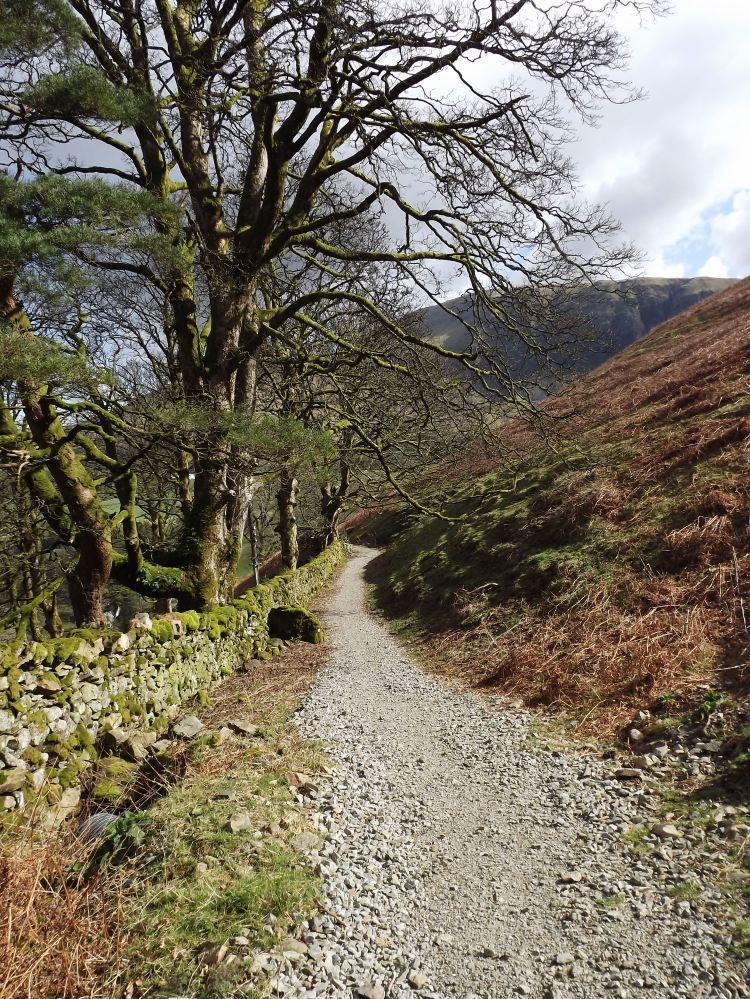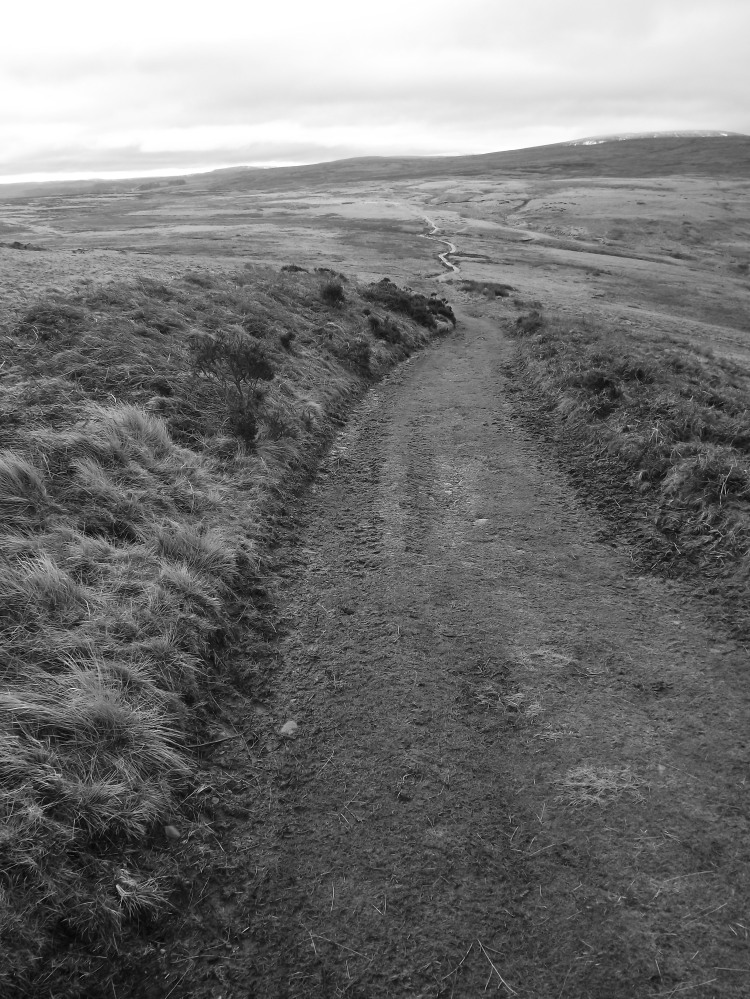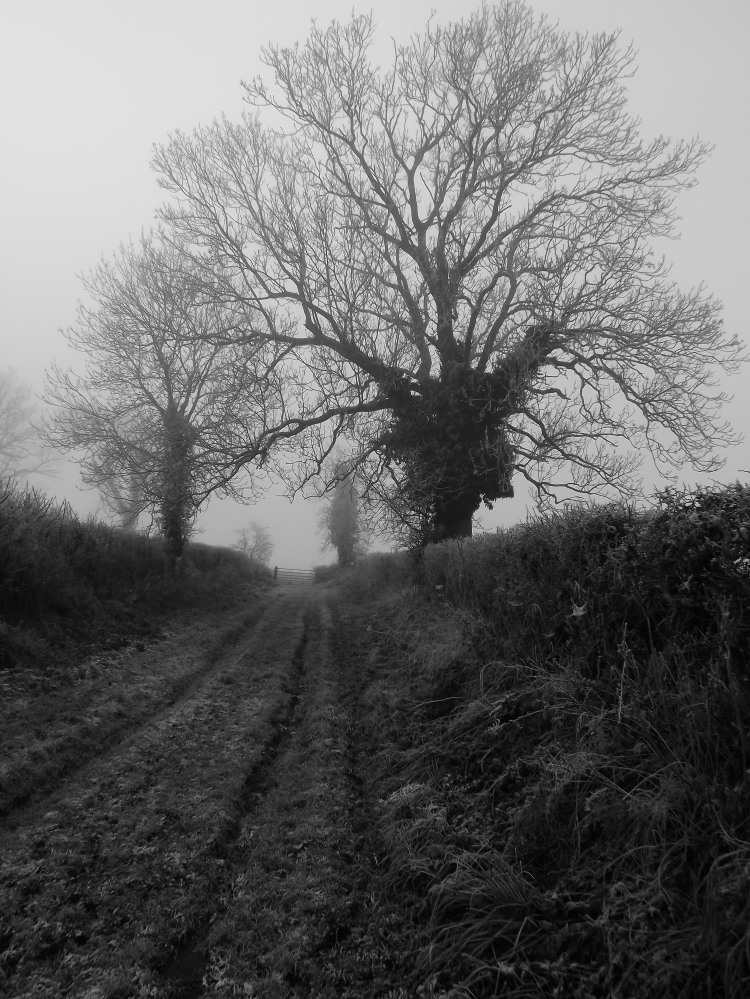The paths will still be there when we can walk properly again. And congratulations to the “Don’t Lose Your Way” Team at The Ramblers who have now completed the first stage of their important campaign to get lost paths back on the map. Well done to everyone who participated. The piece below is from my forthcoming book – a revised and expanded new edition of The Compleat Trespasser, out in May.
We all use paths to access the countryside, whether we consider ourselves ramblers or just use them as somewhere to walk the dog. Or sometimes as a short-cut, the easiest way to get from one place to another. We may well notice our surroundings, the places we walk through, but how many of us consider just why the path is there, why it even exists?
People in this country are fortunate to have a splendid network of public footpaths and bridleways to enjoy. To many walkers and riders they’re something we take for granted. They’ve always been there and we assume they always will be. Just a convenience really.
But every step we take along a path is a stride into our own history. The ridge paths of England were in use even before the Iron Age, already centuries old when Alfred the Great marched his armies along them. That footpath you walk across a field might be the remnants of a Roman road or a medieval drovers’ track. Wayside shrines by old tracks show us the way pilgrims travelled. Paths on our coastline were used by coastguards and smugglers. A path to a country church may well have been walked by worshippers for a thousand years…
Our own history is everywhere on a country ramble.
Our paths are as vitally important for telling us about the social history of Britain as archaeological sites such as Avebury and Stonehenge. Walk a path and you are walking in the steps of countless generations, who walked the same way either for work or, like us, for pleasure. These paths are the happy accidents of history.
But unlike stone circles and prehistoric burial grounds, their historical reasons for being tends to be neglected. For they are the ways of the common folk, the routes many of our own ancestors used for all sorts of purposes.
I’ve been a campaigner for paths for over fifty years. I’ve been a volunteer in the ramblers for almost as long, serving in many posts including being an area footpath secretary and a group footpath officer. Paths are my passion. I’ve written about them in my own walking books and even mentioned them in my novels. But like many walkers I took them for granted in the early days. They were just the ways into the places I wanted to walk.
At public footpath inquiries, where I represented the Ramblers, the opposition would often say, as they tried to shut or badly divert a path “Oh, it’s only the way people used to walk to church, or to the next village” and so on.
But, as a social historian, that to me is very important. We should know about the way our forebears moved around their own land. Knowing that is every bit as crucial to our understanding of the past as interpreting the reasons why Stonehenge was built.
Losing a path, either through a closure or a poor diversion, or not recognising that it is a right of way, is interfering with our island story. That is why I believe the original routes of our path should be preserved as much as possible. It’s our heritage and like any other archaeology we have a duty to save our paths for future generations.

Fortunately, many of our footpaths and bridleways are recorded on definitive and Ordnance Survey maps. But we know that many were omitted, some deliberately and others because people – although they’d always used them –never thought that they were rights of way at all. Claiming these lost paths, before the deadline of 2026, is a fight against time. It is vital that we seek out these lost paths and claim them while we can.
Back in the 1930s, the writer and author A.J. Brown – a great campaigner for access – tried to define what were historical routes. He came up with a short list:
- Ancient British ridgeways (followed by hillside ways).
- Romanised roads (i.e. ancient British ways. metalled and straightened by the Romans).
- Pure Roman roads.
- Drovers’ roads, drift ways and pannier-mule tracks.
- Local green ways.
- Monks’ Trods leading from monastery to monastery or chantry.
- Saltways, flintways and other local ‘tradeways’.
I would add the following to Brown’s list:
- Coffin Paths or Corpse Roads (Lich or Lyke Ways) – the way the dead were taken for burial.
- Parish Paths – used to get to local churches, or from farm to farm and village to village.
- Industrial Paths, the ways miners and quarrymen got to their work or transported minerals.
- Paths between industrial sites and the way workers walked to work.
- Paths constructed for the defence of our country in time of war.
To this long list we can now add paths that came about just for the sheer pleasure of walking. In my time, I’ve seen paths created where none had previously existed, to cater for the needs of ramblers and horse riders, often to fill in gaps on long-distance trails or to get walkers away from busy roads.
Paths are not just a luxury in our busy age, but a necessity now for our leisure. Over the past two hundred years, rambling has become a path-creating and preserving industry in its own right. Thanks to the Ramblers, we still have so many historical paths crossing the land. But there is a lot of work to do to recognise the importance of paths and to discover those ways that go unrecorded. Our politicians and planners still don’t really recognise our rights of way network as a vital national resource.
There’s still a lot of hard work but it is so worthwhile. For I’m always mindful of the wise words of the Victorian country chronicler Richard Jefferies, who said:
“Always get over a stile is the one rule that should be borne in mind by those who wish to see the land as it really is – that is to say, never omit to explore a footpath, for never was there a footpath yet which did not pass something of interest”.
(c) Text and Pictures J and A Bainbridge
Reblogged this on charles french words reading and writing and commented:
Here is an excellent post from John Bainbridge!
LikeLiked by 2 people
I actually used Avebury Henge in one of my stories.
• Irish wolfhound running through the circle of menhirs:
https://drive.google.com/uc?view&id=1G98_rFgo3dMRxkX49B8jHhm6EnwxtV2g
The story is The Gribble’s Eye. Free at: https://www.smashwords.com/books/view/1011733
LikeLiked by 1 person
Thank you, regards John
LikeLike
Love this reminder of rich history which many of us take for granted. Where I live there are few paths left. Almost all land has been subdivided and “developed.” We still have one stream flowing through town, however, although it is partly covered/buried for sections of its flow…
LikeLiked by 1 person
So sad. Seen so much land go the same way. Important to fight for what is left. Regards John
LikeLike
Oh, I would so love to travel those footpaths one day! Thank you for sharing. They are lovely and so inviting.
LikeLiked by 1 person
Thank you. I hoe you do, regards John
LikeLiked by 1 person
This is an absolutely brilliant and beautiful post. Thank you for the photos and the reminders. I have only been to England a couple times, but I left part of my heart there and intend to return. I’m off to check out The Compleat Trespasser. Many thanks again.
LikeLiked by 1 person
The new edition of my book won;t be out for a month. More in it than the old one. Thank you for your lovely comment, regards John
LikeLiked by 1 person
I left a comment on the reblog.
LikeLiked by 1 person
Thank you, John
LikeLike
Reblogged this on Becoming is Superior to Being and commented:
” . . . never omit to explore a footpath, for never was there a footpath yet which did not pass something of interest”.
LikeLiked by 1 person
Many thanks John
LikeLike
Bravo!
Regards Thom
LikeLiked by 1 person
Thanks Thom
LikeLiked by 1 person
When I was a grad student at Exeter, I had the privilege of exploring many such paths in Dartmoor and Exmoor with the uni’s Out of Doors Society. Now that I’m back in the US, there are state and national parks aplenty, but there was something particularly charming and accessible about British paths. That is one of the things I miss most about my time in Exeter.
LikeLiked by 1 person
Thanks Steven. I know Dartmoor and Exmoor well, as I used to live not far from Exeter, regards John
LikeLiked by 1 person
Well said – I’ve always been interested in ancient routes and ways and like to know the history of them where possible.
LikeLiked by 1 person
Still lots of paths that have been lost over the years too. JB
LikeLike
How wonderful!
LikeLiked by 1 person
Many thanks, John
LikeLiked by 1 person
🙂
LikeLiked by 1 person
Charles, this is a fantastic post!
There have been countless times when I’ve hiked paths where the gold minors passed through during the gold Rush craze in harsh weather conditions and very rough Terrain. The Donner Party as well. So much history apon many a path around the world! The Native Americans traveled many, many, paths that led the way to where we are today! This is one of my very favorite posts of yours. Nicely delivered! ☀️
LikeLiked by 1 person
Many thanks Myth and to Charles for reblogging. Wherever we walk we are going in the steps of history. Regards John
LikeLiked by 1 person
You bet!☀️
LikeLike
This was a fascinating post! I enjoyed it a great deal.
LikeLiked by 1 person
Many thanks Liz, regards John.
LikeLiked by 1 person
You’re welcome, John! I’ve been a walker of paths since childhood, so to think of their history just adds another dimension to the experience.
LikeLiked by 1 person
It does indeed.
LikeLiked by 1 person
Reblogged this on gallybeggar.
LikeLiked by 1 person
Many thanks Jonathan, regards JB
LikeLike
You’re welcome. Really enjoyed it.
LikeLike
I’m not much of a walker, but I love to run. I’m determined that walking/running is the best way to see the world. I look forward to someday visiting the rural parts of your lovely country and exploring these historic pathways. Thank you for this!
LikeLiked by 1 person
And thank you for your lovely comment. Hope you see them all. John
LikeLiked by 1 person
Having visited England for the very first time this past Dec/Jan, I will never forget the path I walked to Bodiam Castle in East Sussex, it was a lovely day and I marvelled at the Wood doves in the trees! Thank you for sharing this beautiful post…
LikeLiked by 1 person
And thank you for this lovely comment, Hope you visit again regards John
LikeLiked by 1 person
We miss England very much, it felt like returning home…so yes, I will visit again, John!
LikeLiked by 1 person
I’ve taken the liberty of re-blogging. Let’s hope we’ll all be out there again before too long. All the best
LikeLiked by 1 person
Very many thanks. Stay safe, regards John.
LikeLike
Reblogged this on Musings on Life & Experience and commented:
Information on why footpaths exist and the saving of them.
LikeLike
I just love that England is covered with footpaths going back through centuries. How wonderful in a world that is increasingly divided up and blocked off. Someday I hope to get to England and walk a few of them. 🙂 Lovely post.
LikeLiked by 1 person
I hope you do and thank you for following. Regards John.
LikeLiked by 1 person